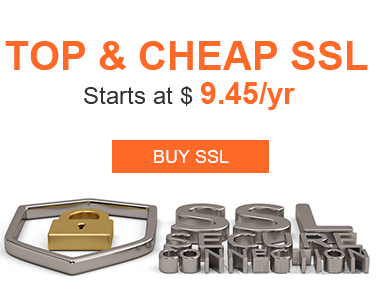SSL Certificate
Deploy an SSL certificate to enable HTTPS encryption of websites, trusted identity authentication and prevent against data leaks or tampering during transmission.
Get SSL Certificate >Blog > Why the Browser Lock Icon Is Changing — And What It Really Means for SSL Certificates
Tag:
Browser Lock Icon
SSL Certificates
2288:0
SamanthaSeptember 16 2025
Have you noticed something different when you type in a web address? That little padlock icon — the one that used to say "Secure" next to it — has changed.
But before you think "Oh, SSL certificates must not matter anymore," hold on. The truth is almost the opposite: SSL certificates are now more central than ever. The lock icon is just being rethought. Let's dive into what's happening, why, and what it really means for the websites out there.
1. The Evolution of the Lock Icon
· In the early days, HTTPS was rare. A website with SSL/TLS (secure connection) was a signal: “Hey, I care about security.” So browsers let you see "Secure" text + a lock icon, to reassure you.
· Over time, more sites adopted HTTPS. It became the standard rather than the exception. Showing "Secure" everywhere loses its special meaning.
· Chrome replaced the old lock icon with a more neutral icon — no more "Secure" text. The icon now focuses more on connection settings than on communicating "trust."
So the lock is fading, but the secure connection isn't.
2. What SSL Certificates Really Do (And Why They're More Important Than Ever)
While the lock icon is just a user-facing symbol, SSL certificates are what make that symbol possible. Here's what they do:
· Encryption of data in transit: SSL/TLS certificates ensure that anything you send between your browser and a website (passwords, credit card numbers, messages) is scrambled so snoopers can’t read it.
· Authentication / identity verification: Depending on the type of certificate — DV (Domain Validation), OV (Organization Validation), or EV (Extended Validation) — the certificate also tells visitors, "Yes, this website is who it says it is." That matters a lot for trust.
· Preventing tampering: A good certificate helps prevent man-in-the-middle attacks, eavesdropping, and data manipulation.
Because browser makers have decided encryption should be the norm, the lock is no longer highlighted so heavily. But that doesn't change what SSL certificates do behind the scenes—they still guard privacy and integrity.
3. Looking Ahead: Trends That SSL Certificate Owners Should Know
Here are a few trends to keep on your radar:
· Shorter certificate lifetimes — Some browser‐standards bodies are pushing for SSL certificates with shorter validity periods. Renewals will be more frequent. Automated renewal tools will become more essential.
· More emphasis on identity verification — As encryption becomes a given, proving who runs the site (OV/EV, business verification, trust marks) becomes a key differentiator.
· Post-Quantum Cryptography (PQC) — It's not yet mainstream, but research continues. Certificates and SSL/TLS protocols will eventually need to adapt so that encrypted connections remain secure even in a post-quantum world.
· Better user communication — Since the lock isn't doing as much heavy lifting in terms of trust signal, websites may need to do more to let users know "you are on a secure site" via UI/UX, badges, messages, or FAQs.
Conclusion
So, is the lock icon changing? Yes. Does that mean encryption — and by extension, SSL certificates — matters less? No way. If anything, SSL certificates are more important now.Next time you see a site without a lock, or a site with a less prominent icon, remember: it's not the visible token that matters so much — it's what keeps things safe behind the scenes. The lock icon is evolving; SSL certificates remain the bedrock.
RELATED
2025-12-04 11:44:39
2025-11-27 13:34:03
2025-10-22 15:01:21
2025-10-16 11:03:19
2025-10-10 14:02:04
Categories

Free SSL Tools
Top Posts
Comments